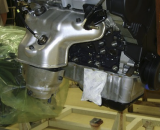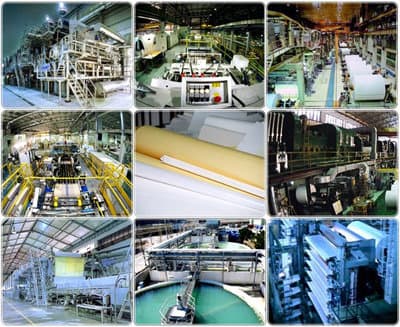Rosin Sizing Agent at Acidic Pseudo-Neutral Papermaking
Negotiable Min Order Quantity Unit
- Required Quantity
-
- Place of Origin
- Payment Terms
- Negotiable
- Production method
- Negotiable
- Shipping / Lead Time
- Negotiable / Negotiable
- Keyword
- Category
- Catalyst & Chemical Auxiliaries
Taegwang Chemicals Co., Ltd.
- Country / Year Established
-
 South Korea
/
South Korea
/
- Business type
- Others
- Verified Certificate
-
11

| Product name | Rosin Sizing Agent at Acidic Pseudo-Neutral Papermaking | Certification | - |
|---|---|---|---|
| Category | Catalyst & Chemical Auxiliaries | Ingredients | - |
| Keyword | - | Unit Size | - |
| Brand name | - | Unit Weigh | - |
| origin | Stock | - | |
| Supply type | - | HS code | - |
Product Information
REPEL Series - Rosin Sizing Agent at Acidic & Pseudo-Neutral Papermaking
The commercially available rosin sizes are the so-called fortified rosins, i.e. besides the natural -COOH group in the rosin, further carboxyl groups have been introduced to increase the reaction ability. The fortification is achieved with maleic acid anhydride or more usually with fumaric acid. This takes place by a Diels-Alders diene synthesis and by a Prins-reaction or by a combination of these. Only a small quantity of the rosin acids are fortified, since there is usually an optimum degree of fortification.
 Like the unfortified rosins, the fortified rosins are solid either saponified (so-called soap size) or in the form of electrostatically or sterically stabilized emulsions (so-called dispersion size), the properties of which differ as can be expected with regard to the different methods of stabilization.
Like the unfortified rosins, the fortified rosins are solid either saponified (so-called soap size) or in the form of electrostatically or sterically stabilized emulsions (so-called dispersion size), the properties of which differ as can be expected with regard to the different methods of stabilization.
Most types of rosin size are precipitated by heterocoagulation with alum. The optimum pH is in the range 4.5-5.5. The quantity added depends on the degree of sizing desired and on the pulp used and is normally 0.2-1.0% calculated on dry pulp. There are also cationic types of rosin which do not require alum addition for their retention.
During sizing with rosin soap, the rosin is precipitated with aluminum salts in the stock. Colloidal particles with a size of between 10-100 nm are obtained. These particles are cationic in the pH range 4-6.5 if there is an excess of aluminum ions and are negatively charged fibers. The retention mechanism for the aluminum rosinate is therefore heterocoagulation. At high pH values, the soap is not transferred to its aluminum or acid form.
Adsorption of sodium soap on the Al-rosinate prevents the anchoring onto the cellulose surface and the formation of a stable low energy surface. Rosin sizing is therefore generally limited to the acid region. The optimum pH for sizing with soap rosin is between 4.5 and 5.0.
The mechanism of sizing with rosin dispersions is completely different from that with soap rosin. The reaction between rosin and aluminum takes place mainly in the dryer section and on the surface of the particle. The reaction between alum and rosin in the stock is relatively insignificant and the retention conditions of both the aluminum ions and the rosin dispersion must therefore be optimized. Care must be taken to ensure that aluminum can be deposited either in the form of highly charged complexes or as aluminum hydroxide.
The addition of aluminum sulphate before the rosin dispersion, is recommended for rosin dispersions. Aluminum adsorption on the fiber surface gives cationic charge sites where the rosin dispersion can be deposited.
The reaction between aluminum and rosin takes place only after the rosin has spread on the fiber surfaces during drying. Since the sintering temperature for a rosin dispersion is only about 60°C, flowing and spreading, in principle to a monomolecular layer, can take place. This cannot take place in the case of the aluminum resinate since its sintering temperature is higher, above 120°C. This explains in most cases why dispersion-based rosin is a more efficient size than rosin soap.
1. Typical Properties
|
REPEL-C35
|
REPEL-S50
|
|
|
Appearance
|
White emulsion
|
Dark brown solution
|
|
Active content(%)
|
34.0~36.0
|
49.0~51.0
|
|
Bulk viscosity(cps, 25°C)
|
below 50
|
below 2,000
|
|
Specific gravity(Ave.)
|
1..04~1.08
|
1.16~1.18
|
|
pH
|
2.2~3.2
|
9.0~11.0
|
|
Charge density
|
Cationic
|
Anionic
|
|
Storage temp.(°C)
|
5~35
|
5~35
|
|
Shelf life(Months)
|
3
|
6
|
2. Packaging
|
Plastic pails
|
Metalic drums
|
Schutz container
|
Other sizes
|
|
20kg
|
200kg
|
1,000kg
|
-
|
3. Heath and Safety
We know of no ill effects that could have resulted from using REPEL for the purpose for which it is intended and from processing it in accordance with current practice. REPEL series does not exert any harmful effects on health, provided it is used properly.
These data are given for information only. They do not constitute a specification and no liability is assumed, nor freedom from any existing patents.
We do not guarantee the applicability or the accuracy of this information and the suitability of our products in any given situation, since we cannot anticipate the many different conditions under which our products may be used.
B2B Trade
| Price (FOB) | Negotiable | transportation | - |
|---|---|---|---|
| MOQ | Negotiable | Leadtime | Negotiable |
| Payment Options | Negotiable | Shipping time | Negotiable |
- President
- Mintae Park
- Address
- 229, Mugeuk-ro, Geumwang-eup, Eumseong-gun, Chungcheongbuk-do, Korea
- Product Category
- Catalyst & Chemical Auxiliaries
- No. of Total Employees
- 1-50
- Company introduction
-
Taegwang Chemicals Co., Ltd. is a leader in the development and production of paper additives in Korea. Started out as Taegwang Chemicals Company in 1982 which was our first step into paper chemicals industry, we have been growing and expanding ever since. In 1987, we re-established as Taegwang Chemicals Co., Ltd. with our accumulated technological know-how and expertise to fulfill our customers' needs and meet their requirements.
Our success has been resulted from continuous and thriving effort in development and improvement of our products while accumulating new and advanced technologies. It is no wonder that we, Taegwang, are the first in Korea to develop and supply alkaline sizing agents (AKD emulsion size) which contributes cost reduction and environmental impacts as well as improvements of quality for paper industry in Korea.
Since 1987, Taegwang has been providing technical aids to paper industries, which converted for alkaline papermaking, and Taegwang is now recognized as the leader in technology for alkaline papermaking in Korea. Our major product lines are AKD SIZING AGENTS, ROSIN-BASED SIZING AGENTS, FIXING AGENTS, WET- & DRY-STRENGTH AGENTS, DYE FIXING AGENTS, RETENTION AIDS (PROGRAMS), and ANIONIC TRASH CATCHERS.
We will not stop here, but continually thrive and step forward until we become a leader in the world-wide paper chemicals industry.
- Main Product
Related Products

Activated Carbon
Corn Cob Meal

Adsorbents based on Activated Carbon

2,3,4,4'-Tetrehydroxybenzophenone, CAS NO.: 31127-54-5

VCI Desiccant GVD310






































